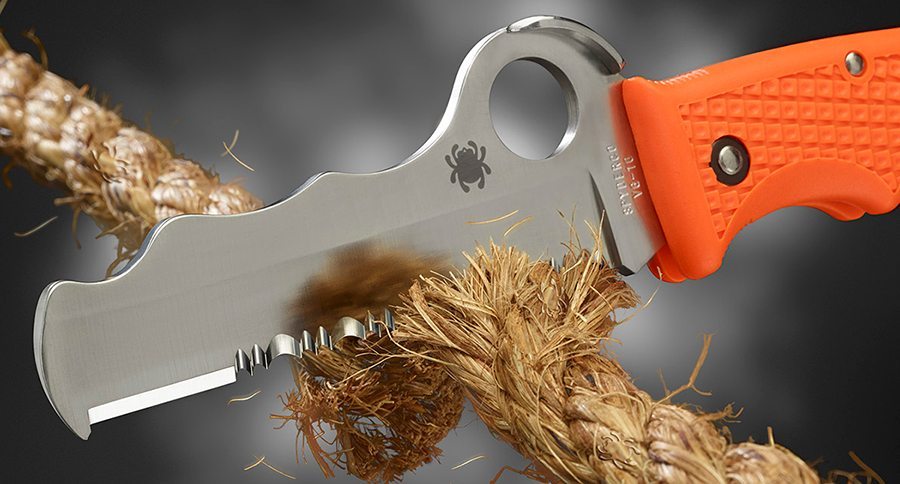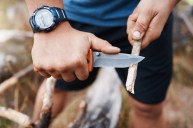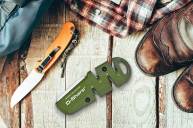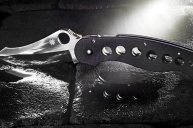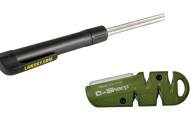Besides striking some people as uniquely beautiful, a strong, high-quality serrated blade can be a pleasure to use.
A common myth about serrated blades is that they're less useful and a pain to sharpen. In reality, most people simply don't know how to sharpen them, so they get intimidated—and they're missing out.
There's a reason the most trusted cutlery companies continue to make serrated blades.
A serrated edge gives you an advantage when cutting fibrous materials, including clothing, netting, and seat belts.
A nicely sized, easily maneuverable SpyderEdge™ knife is one of the best rescue, survival, and emergency tools you can have. It gives you speed and power when seconds matter and you need to cut through stubborn material as quickly as possible. It's not an exaggeration to say a serrated blade can mean the difference between saving a life and losing one.&trade
Serrations protect your knife's edge from heavy damage.
If you run into an obstacle while cutting (like a heavy staple in a box), a serrated edge will usually catch it and avoid the long grate or scrape that would make a plain edge instantly useless in the same situation. Yes, you might need to take the time to learn to care for it, but a good, tough serrated blade will flat out last longer, suffering minor damage where a plain edge would be completely ruined.
A serrated edge is a functionally longer cutting surface, which means it holds up much longer than you think without needing to be sharpened.
A SpyderEdge has a cutting edge surface area that is up to 24% longer than its PlainEdge counterpart. That means you will notice a big difference in its usability over time as well as how often you have to sharpen it. Where a serrated edge dulls in the points, when cutting through thick, unruly material, a straight edge dulls completely, like a much "softer" steel.
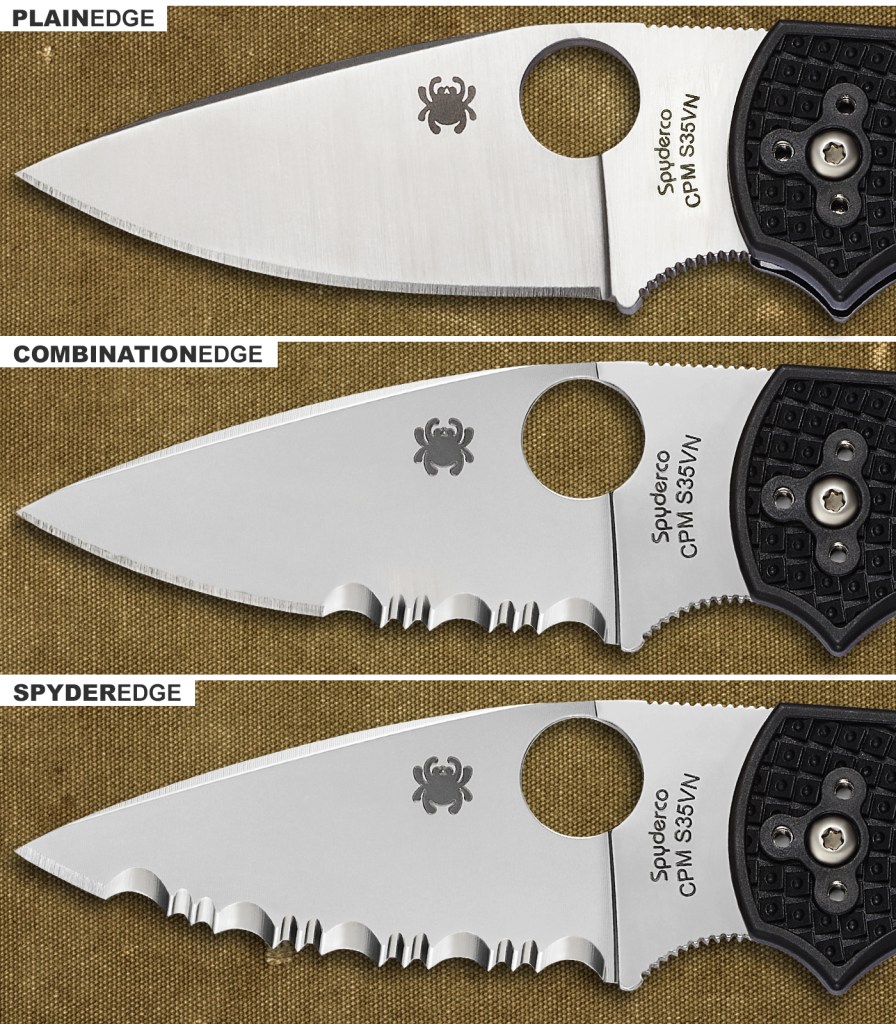
Image courtesy of Spyderco
You'll be surprised how much "the best of both worlds" holds true for a CombinationEdge™ (partially serrated) blade.
Survivalists in particular often find that a CombinationEdge blade is the best fit for for the way they use their knives. Anything you can do with a plain edge, from sharpening pencils to detailed work, you can do with a serrated blade, and you might even do it better.
It does come down to personal preference, and you won't know what you prefer until you give it a try. That's why it's not a bad idea to pick up a CombinationEdge EDC and see how it performs as uses manifest themselves. You just might wonder what took you so long.
In the end, it's about quality.
Even the biggest fans of serrated blades will tell you to steer VERY clear of cheap ones. There are so many factors involved, from the shape and spacing of the serrations to the choice of steel, that buying a poor quality serrated knife is a major waste of money and can even be dangerous.
Do your homework and reward yourself with a knife that was truly engineered to perform.
A note about sharpening:
Now that you're sold on serrated edges (or at least curious about them), you might still have sharpening questions. Good news: Spyderco's Tri-Angle Sharpmaker will do the job for any serrated or plain edge.
There are lots of tutorial resources out there, too, such as this brief video (below). Even better news: Spyderco will factory sharpen any of their serrated SpyderEdge blades free of charge; you only have to pay a $5 shipping cost.
